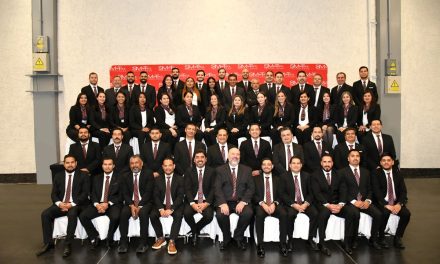Common Challenges of Start-Ups

By Chris Johns, CTO, SMS – Smart Made Simple
Sometimes you have to be the person in the room who instigates the ‘unfit for role’ conversation.
As we have been in the UK electronics industry for approaching 100 years, we have a reputation as the go-to people to take care your electronics product from concept through to commerce.
 Our positive association brings many brand benefits, but it also opens the floodgates for lots of enquiries from the start-up community. The technology industry has an appreciation that innovation is no longer the sole responsibility of the company’s R&D team. Globally, we have seen a real trend develop for the Original Equipment Manufacturer (OEM) to partner with their Electronics Manufacturing Service Provider (EMS) to harness their concept to creation experience and expertise whilst religiously protecting their Intellectual Property (IP). You’ve seen this within the Tier I environment with companies like Jabil with their ‘Blue Sky Centres’ and Flex with their ‘Product Innovation Centres’. This market need isn’t exclusive to the Tier I’s, as it requires accessibility and the right fit.
Our positive association brings many brand benefits, but it also opens the floodgates for lots of enquiries from the start-up community. The technology industry has an appreciation that innovation is no longer the sole responsibility of the company’s R&D team. Globally, we have seen a real trend develop for the Original Equipment Manufacturer (OEM) to partner with their Electronics Manufacturing Service Provider (EMS) to harness their concept to creation experience and expertise whilst religiously protecting their Intellectual Property (IP). You’ve seen this within the Tier I environment with companies like Jabil with their ‘Blue Sky Centres’ and Flex with their ‘Product Innovation Centres’. This market need isn’t exclusive to the Tier I’s, as it requires accessibility and the right fit.
Starting UP? Start Out Right
Over 500,000 start-ups fail per year. Given the complexity and risk associated with product introduction, our OEM customers understand that their need is the success rate of product introduction, development, and market adoption, in an environment where speed-to-market, and time-in-yield is critical.
The common challenges our developmental customers face:
- Time-to-market risk
- Limited engineering resources
- Access to state-of-the-art equipment
- Market entry and supply chain risk
- Ability to scale
Time-to-Market Risk
Given that speed is of the essence, we pride ourselves on our ‘open book’ policy. We will be honest and challenging during our initial conversations to validate the concept in timely manner, not only for us, but for our customers benefit too. Time becomes a very valuable commodity during the product introduction phase. From experience, this is when we tend to categorise our new, start-up customers into three types:
- They have an idea, but they don’t know how to implement it
- They have had their idea implemented and qualified using a developmental platform such as Raspberry PI, but they now need support and security in its evolution
- They have a full circuit diagram and their first Printed Circuit Board has been assembled (PCBA), but they now need support and security for scale and speed
Limited Engineering Resources
Our sweet spot is customer number two, and we are not alone. This category of customer has been one of the main drivers for the influx of design houses opening to offer solutions in mechanical, optical, software and firmware design. To this technology cluster, bringing together these vertical services (VI), becomes like a jigsaw puzzle as they try to navigate how to put in place their supply chain. Of course, too many touchpoints increase risk and supply chain fragility. This is why more OEMs are demanding in-house VI, to reduce complexity and risk, whilst keeping the end goal of speed in focus.
As we become more involved at this point of the Production Life Cycle (PLC), we can also help to erode a scenario that has been quite common up until now. Over engineering. We have seen, as developmental companies start to get excited about their product introduction there can be a tendency to over-engineer the product for their intended target market. Our engineering experts will strip back the requirements to quote for what they believe the market actually requires matching the product to its intended application. These consultative actions reduce unnecessary complexity and cost. However, this is never a cost conversation, but a volume/product tailoring to suit. We often work to remove component parts that we know are difficult to source, or could obsolete, or we can take advantage of component pricing that we only achieve by buy in bulk, which of course leads to further economies of scale for our customers.
Access to state-of-the-art equipment
Our ‘Development Services’ area is a department dedicated to supporting customers’ needs for prototype, rapid build and low volume manufacture. Functioning as an autonomous and dedicated area, with the flexibility to scale up to be able to tap into the resources of our manufacturing.
The development centre has grown significantly for us since conception. To support this growth, we have continued to invest in new technology and equipment. Our latest investment is part of a long-term strategic plan, to introduce a new Mycronics Mydata assembly line for printed circuit board assembly (PCBA).
- Mycronic – MY600 Jet Printer – State-of-Art Development
- Mycronic – MY200X Placement
Market entry and supply chain risk
We have made a commitment and investment to operate with the agility and flexibility of a Tier II / Tier III player, with the technology engine of a Tier I EMS company.
Customers come to us, as we offer them an understanding of their total landed cost and complete supply chain transparency and traceability, as advanced software solutions continue to transform the supply chain and devices become inter-connected, to create the Internet of Things (IoT).
By harnessing technology at the speed of innovation, we understand how performance is improving year-on-year, especially at the lower volume / higher mix product configuration level. Competitiveness is being achieved in the UK, which was once considered a higher cost economy.
We provide a total smart supply chain management solution, which increases our customers’ flexibility and reduces distribution barriers, turnaround times and overall transportation and product costs. Product fulfilment and vertical integration with first-rate component capabilities, help OEMs create market-leading products.
Ability to scale
We are aware that if one of our developmental customer does fly high, we will need to build a flight path for them, and we will be here for the next generation and the next generation, which keeps our future exciting.












